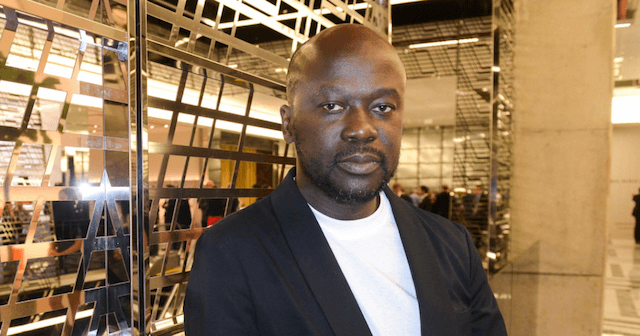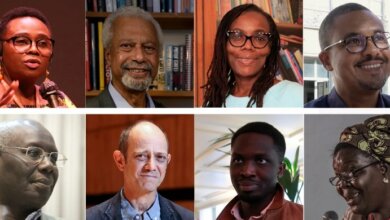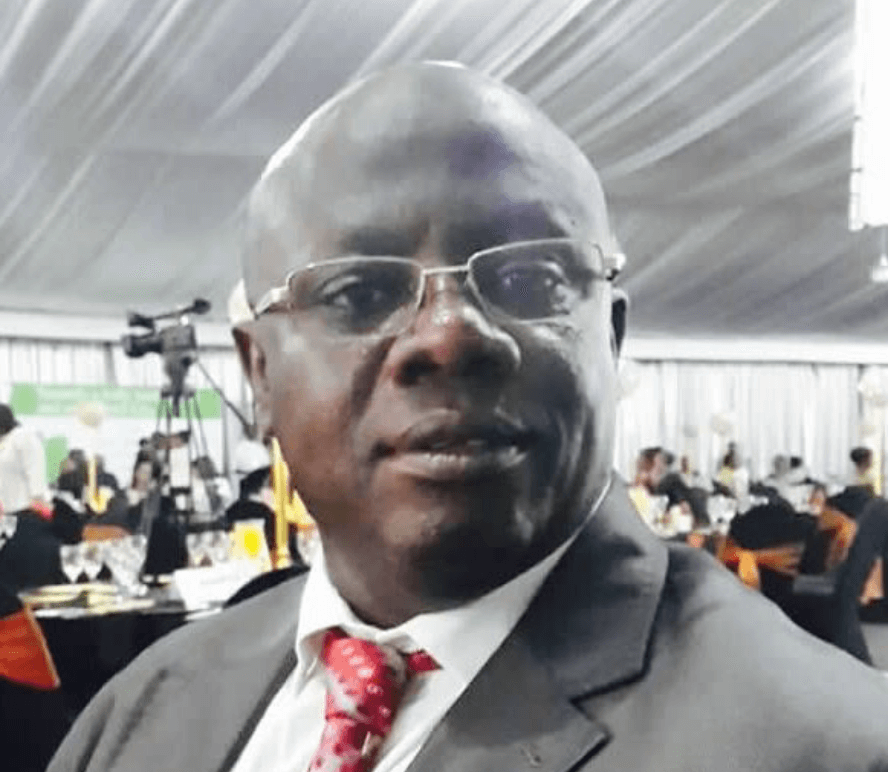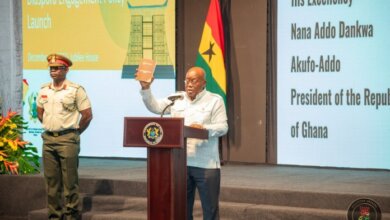David Adjaye builds museum of African American history

David Adjaye is a New York City- and London-based architect born to a Ghanaian diplomat. His work includes the Nobel Peace Center in Oslo and the National Museum of African-American History and Culture, scheduled to formally open in 2016. Below is an interview he granted Joseph Stromberg of the SMITHSONIAN MAGAZINE in 2012.
While growing up, you lived in Tanzania, Egypt, Yemen, Lebanon, and England. How did this experience inform your sense of design?
Unlike people who may have had an education or a stable upbringing in one or two places, I was forced from a very early age to negotiate a wide variety of ethnicities, religions, and cultural constructions. By the time I was 13, I thought that that was normal, and that was how the world was. It gave me a kind of edge in an international global world, which we find increasingly in the 21st century.
So I think, in a way, my parents bringing me up the way they did prepare me for the world that we now inherit and live in. That is intrinsic to my approach toward design, which always seeks to be highly sensitive to the cultural framework of different peoples. Most of my work has always been in cosmopolitan metropolitan cities, or places where differences are being negotiated all the time. A sensitivity to that is at the heart of my practice.

The Museum of African American History and Culture will sit right next to the Washington Monument, and will likely be the last museum constructed on the National Mall. What are some of the factors to consider when designing a building for such an iconic site?
It is a monumental site and a monumental project and it has taken nearly 200 years to get to this place. Of course, several things absolutely come to mind in thinking through what this building should be and how it should work with the program that we were given. How do you add to such a fantastic master plan, one of the most significant master plans in the world—this incredible monumental core to the capital city of the most powerful country in the world? How do you understand its intrinsic nature, which is the idea of the pastoral and the ordered landscape? How do you make an end to the ordered landscape and begin the pastoral, which is the National Mall proper, and then open onto the Washington Monument grounds?
In a way, we always conceived of our building as a kind of turning point, a knuckle, a joint, which articulates the two things, neither one nor the other, but bridging between the two things. So from the sensitivity of the master plan, that’s the critical issue that we’ve been very concerned about, making sure our building is not just another building on the mall, but a building that ends the mall proper and begins the monument. It’s really a moment of disjunction.
The museum is intended to cover more than 400 years of African-American history and culture. How do you go about designing a building that is able to convey such a complex and significant history?
It’s not easy, and nobody says that we’re going to get it right. But I think that what we have is a lot of information and a lot of excitement. Essentially, the way it is being designed is to be organized into significant sections. There is history and culture, which is really the primary hub: the history of the people, the Middle Passage, the beginnings in America, the Civil Rights movement until now. It’s a kind of trajectory that’s very important.
Then there’s what I call the life of the citizen. The everyday life, the inclusion in the military, the inclusion in public life, the emergence of the black middle class within the country, and that important role in organizing many aspects of American culture that we take for granted.
And then the final part is the entertainment and the arts. So the third tier is really looking at what music and culture, what African-American music, translated through the American identity, has done to the world, and the significance of that trajectory.
You said that the primary spirit behind your plan for the museum is one of “praise.” What elements did you use to convey this emotion?
When I say praise, I envision it as a human posture. It’s the idea that you come from the ground up, rather than crouching down or leaning. The form of the building suggests a very upward mobility. It’s a ziggurat that moves upward into the sky, rather than downward into the ground. And it hovers above the ground. When you see this building, the opaque parts look like they’re being levitated above this light space, so you get the sense of an upward mobility in the building. And when you look at the way the circulation works, everything lifts you up into the light. This is not a story about past trauma. For me, the story is one that’s extremely uplifting, as a kind of world story. It’s not a story of a people that were taken down, but actually, a people that overcame and transformed an entire superpower into what it is today. The sacrifices of the African-American people has made America better.
Your design calls for the outside of the museum to be covered in a bronze mesh. What effect do you hope to achieve with this?
This has been a really complicated part of the building, where we’ve really been sort of inventing a new material, a bronze-coated alloy and devising a new a new way of applying it. Essentially, we are looking towards the guild traditions of the South. The freed slaves would move into professional guilds, including the ironworking guild. There were very skilled African-American casters— a lot of the early architecture of Louisiana and the South was built by black people. So what we wanted to do was somehow acknowledge that important beginning of transition from the agrarian to the professional class, and to reference this powerful casting tradition.
Oral Ofori is Founder and Publisher at www.TheAfricanDream.net, a digital storyteller and producer, and also an information and research consultant.




